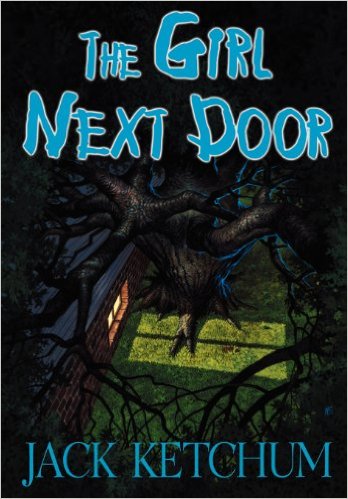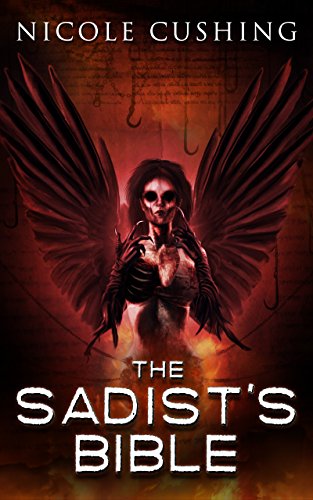
If you are one of those folks who feels we need more women writing extreme horror (we do!), then you should already be aware of – and reading – the work of Nicole Cushing. Her novel Mr. Suicide took home the Bram Stoker Award this year for Best First Novel. And her other releases have garnered quite a bit of attention as well; they include the Stoker-nominated short story collection The Mirrors and three stand-alone novellas (including the Shirley Jackson Award-nominated Children of No One).
Right now, 01Publishing is the final four days of its Kickstarter campaign to fund an illustrated print edition of Cushing’s second novel The Sadist’s Bible. And we’re pleased to announce that it has just met its $3000 funding goal, so the book is officially a go! There’s still time to pre-order and get the perks that come along with funding the release through Kickstarter, but don’t delay!
It’s a pleasure to have Nicole join us in the Library (and it’s a pleasure to hear her talk about a book that would be on the Librarian’s own list of unnerving horrors).
* * *
31 Days of Halloween… with Nicole Cushing
 Describe a time when a scene in a horror novel really unnerved you or caused you to turn on all the lights.
Describe a time when a scene in a horror novel really unnerved you or caused you to turn on all the lights.
It’s no secret that there are several extremely unnerving scenes in Jack Ketchum’s The Girl Next Door. One of the most memorable ones, for me, is a passage where the young protagonist finds himself momentarily swept up into the sick allure of sadistic abuse.
Ketchum has the protagonist (looking back at the events, from the distance of adulthood) say the following: “The truth is…I’d been waiting for this, or something like this, to happen all along. It was as though something starkly elemental were at my back, sweeping through me, releasing and becoming me, some wild black wind of my own making on that beautiful bright sunny day.”
In your opinion, what is the all-time scariest horror novel or short story?
That’s a difficult question. The Girl Next Door would certainly be a contender. But so would the works of Thomas Ligotti. (Particularly his short story collection Teatro Grottesco.)
Ketchum’s book addresses the horror of cruelty as an intentional instrument of hierarchy; the horrors of sadism. Horrors which, despite all our technological progress and supposed enlightenment, persist. Ligotti’s book paints a portrait of a world where all tangible horrors (and wonders, and loves, and identities) are exposed as unreal. Ligotti’s horror, in my opinion, frightens because it tells us in no uncertain terms that free will is an illusion. We think that we think, but we really don’t. Everything that we see is hideously mutable and we’re all merely puppets of some grotesque swinish blackness that animates us (and the stars and dogs and mold) for no reason other than to perpetuate itself.
Take your pick. Which is more frightening? Sadism or nihilism? The man who forces us to accept the reality of humanity’s moral ugliness or the man who points out the ultimate unreality of everything and everyone? Personally, I have to declare it a tie.
 What’s the scariest scene and/or book you yourself have written?
What’s the scariest scene and/or book you yourself have written?
There’s no way I can be even remotely objective about that. Based on the feedback I get from readers, I’d assume it would be a toss-up between Mr. Suicide and The Sadist’s Bible. I might give a slight edge to The Sadist’s Bible, because Mr. Suicide tempers its scariness with gallows humor (and also with a lengthy exploration of family dysfunction). The Sadist’s Bible, as a novella, has to be a bit more relentless to achieve the desired impact in a relatively small space. So there’s a greater focus on fear all throughout it.
List your top three fears.
Well, death would have to be number one because there’s no way I can wrap my head around my own inevitable nonexistence. Fear number two would be losing my mind. (Alzheimer’s, dementia, that kind of thing.) Fear number three is the possibility of getting put in a nursing home when I’m elderly. I don’t have any kids, and I’ve thought about what would happen if I ever become too old to take care of myself. The idea of being at the mercy of paid caregivers who have a thousand other people to attend to (caregivers who’d probably much rather check Facebook on their phones than change my bedpan) isn’t especially appealing.
Learn more about Nicole Cushing and her work at www.nicolecushing.com.





Leave a Reply